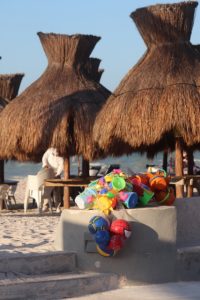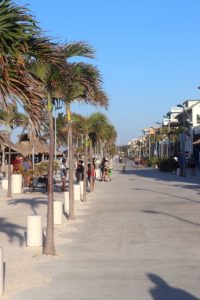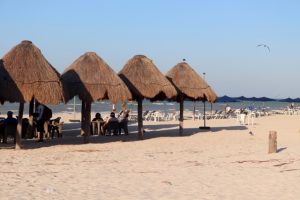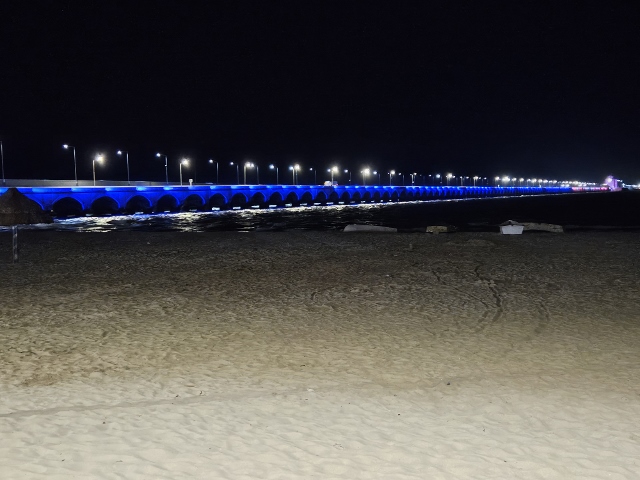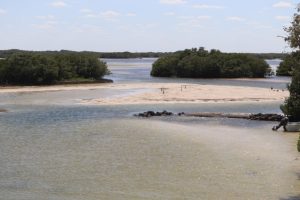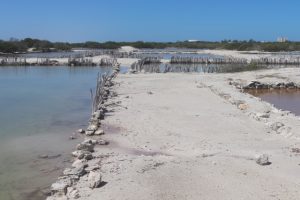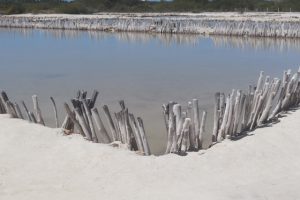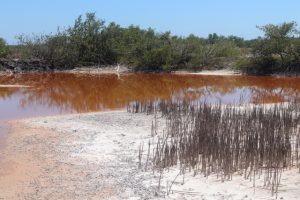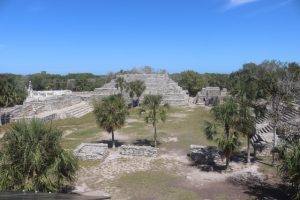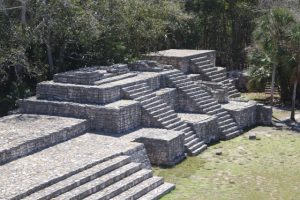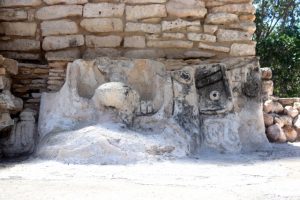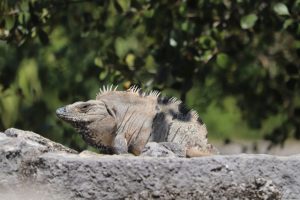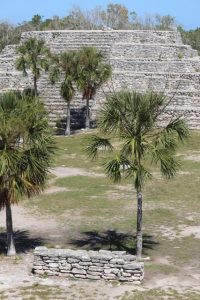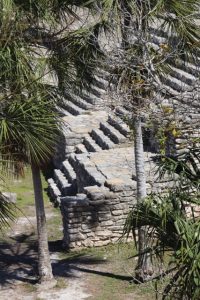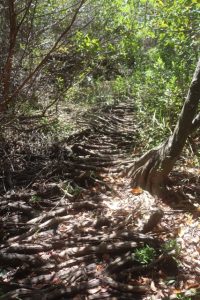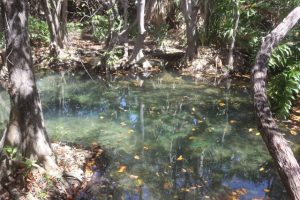Progreso is a humble, but well established beach town, also along the Gulf of Mexico coast. Mostly Mexican tourists, I believe, which immediately changes the atmosphere, away from the aggressive targeting of the Gringo dollars. I say humble, because so far there are just a few hotels and restaurants along a pedestrian boulevard, and some more in the streets further back from the beach. The only big thing in town so far is the jetty, which extends no less than 6.5 km into the sea, allowing not only large freight boats, but also the cruise ships to dock. But from driving to here along the coast, it is clear that this Costa Esmeralda, on the way to Progreso, is going to be the next big thing. Like earlier, you almost don’t see the sea from the road, but there is lots of construction going on, big hotels, big apartment buildings. Land is still offered for sale, but many plots have already been developed into gated communities, with beach villas, condo’s, clubs. And obviously, there is more to come.
Behind the coastal strip, like in Cancun just a thin sliver of land, is the Laguna Rosada, the pink lagoon. Mostly poorly visible, too, hidden from view by more shrubs, but wherever there is an opening, it shows an expansive water body, more brown than pink, with a bird population not so different from that near Rio Lagartos.
And here, too, are salt works, although on a lot smaller scale than what we saw in Las Coloradas. We are welcomed by four friendly guys who work the basins, but have all the time in the world for a chat. And they don’t mind us wandering off between the ponds, watching some of the birds. But these ponds never get as pink as in Las Coloradas; they obviously don’t contain enough of the micro-organisms, which is why the workers have surrounded the ponds with wooden sticks. These, they say, keep the sand out when the wind blows, another way of creating clean salt. We bought some, to try at home.
Just behind the salt works is another Maya site, Xcambo. Back to the Indiana Jones-mode, with hardly any other visitors, except that this, rather small, site has been heavily restored, a bit more visible than in many other places. The advantage is that you get a nice impression of a largely complete Maya square, surrounded on four sides by buildings and pyramids. Which you can climb, too, although they are not as high as the one in Ek Balam. It is just a cute little place, really, and enhanced by the ruins of a little chapel, obviously built afterwards. Further away in the jungle are more structures, so there is enough to discover still.
And if this wasn’t enough, we also crawl through the jungle, along a heavily overgrown path, to a nearby cenote. Just to have a look, not to swim – we have left our gear in the hotel. Overwhelmed by mosquitos we rush back to the car, and to a beach restaurant in nearby Chicxulub.
